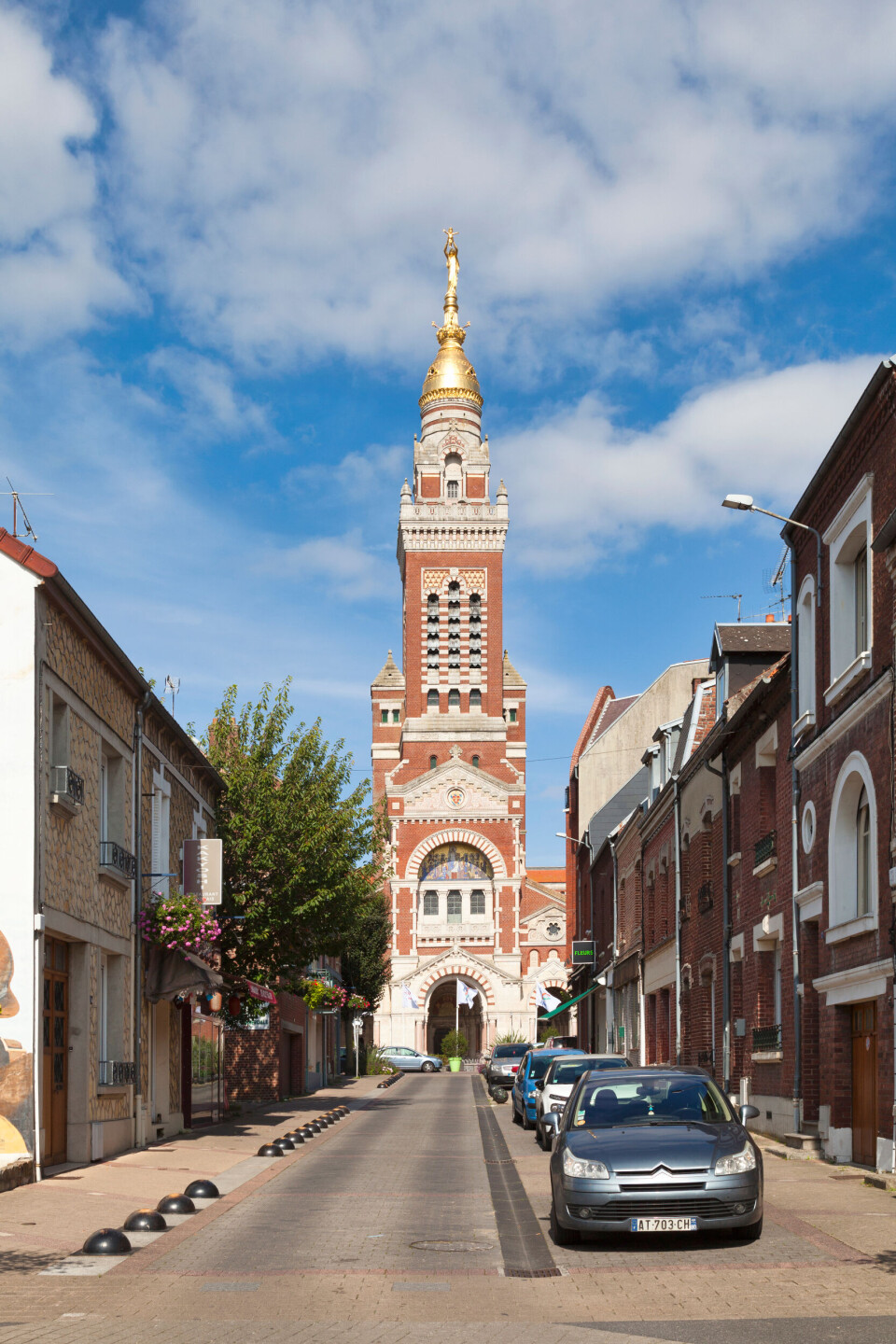-
The origins and meaning of tirer les marrons du feu
As Christmas approaches, we look at a phrase to describe someone who takes advantage of a situation
-
La Baule is a classic French case study in the evolution of the grand resort
The coastal town renowned for its Belle Epoque villas, Art Deco elegance, and modernist designs, attracts tourists and remote workers alike
-
Renovation of Espaces d’Abraxas: A Parisian architectural icon reborn
The €16.3 million renovation in Noisy-Le-Grand will transform this neo-classical landmark with upgraded apartments and green spaces
€180million facelift for WW1 bombarded French basilica
Notre-Dame de Brebières basilica in the Somme was hit by 2,000 bombs but its golden statue held true to 'prophecies' not to fall until the war ended

Notre-Dame de Brebières, the neo-Byzantine Basilica in Albert (in the Somme department, half an hour north-east of Amiens) was built in 1885-1897, but totally destroyed in the First World War. It is said that 2,000 shells fell on the church.
'When it falls, the war will be over'
In 1915, after a particularly ferocious bombardment, the golden statue of the Virgin Mary and the Infant Jesus (by Albert Roze) on top of the spire was left tilted over at right angles, parallel to the ground below. “When it falls, the war will be over,” said the Allied soldiers, looking up at the ruined tower. It became a symbol of resilience amongst the thousands of British soldiers who passed through the town, and called it the ‘Leaning Virgin’ and the ‘Golden Virgin’. Extraordinarily enough, the statue did not finally fall until April 1918, the year the war ended.
The cathedral was reconstructed between 1927 and 1931 according to the original 19th century plans. The works were overseen by architect Louis Duthoit, the son of the original architect, Edouard Duthoit. Even the interior decorations were identical. The 76 metre-tall belltower topped with a golden statue of the Virgin Mary was also re-constructed as new.
In 2016, to mark the centenary of the sanguinary Battle of the Somme, Barbara Hendricks accompanied by the Orchestre de Picardie gave a ‘Peace Concert’ in the cathedral, but by that time it had already fallen into disrepair and water was leaking in, damaging the structure as well as some of the decor.
The building has now undergone a €180million facelift with €48,000 of funding coming from France’s heritage lottery. The works, which took five months, have restored what Pope Léon XIII called the ‘Lourdes du Nord’ to its former glory. The interior design was influenced by Art Deco motifs as well as patterns from the Orient.
Not everything could be saved, but the interior fresco in the transept (20m high and more than 9m wide) has been cleaned and restored. The work took time as samples of the construction materials were analysed in a lab in order to match the original plaster.
Then various techniques were tried out, in order to replicate the original painting but in a more durable way. (Much of the paint had flaked off the plaster.) Churches are often slightly damp and if modern materials are used to repair them, they tend to crack away from the older, original features.
The works are to be continued over the coming years, in order to preserve the building for posterity. An association, ‘Des Amis de la Basilique’ is already raising the necessary funds.
The Basilica remains an important pilgrimage site and is visited by 60,000 people every year, not counting congregations at Mass. (The population of Albert is around 10,000.) Many of them are visiting key war sites. Right beside the Basilica in Albert is the Somme 1916 Museum.
250m of bunkers and tunnels underground
Ten metres underground, in the 250m of bunkers and tunnels which sheltered the town’s population during the bombardment, the museum illustrates what life was like for soldiers in the trenches using waxworks, videos and displays. It also traces the history of the Battle of the Somme. It is chilling to realise that 56,000 men died on the first day alone.
Albert is now twinned with Ulverston in Cumbria, and the German towns of Aldenhoven and Niesky. After the war, the town was ‘adopted’ by Birmingham, which helped finance the reconstruction of the town (it had to be entirely rebuilt), which is why the main street is called the Rue de Birmingham.
Related stories
More to Champagne region in France than a glass of bubbles
























